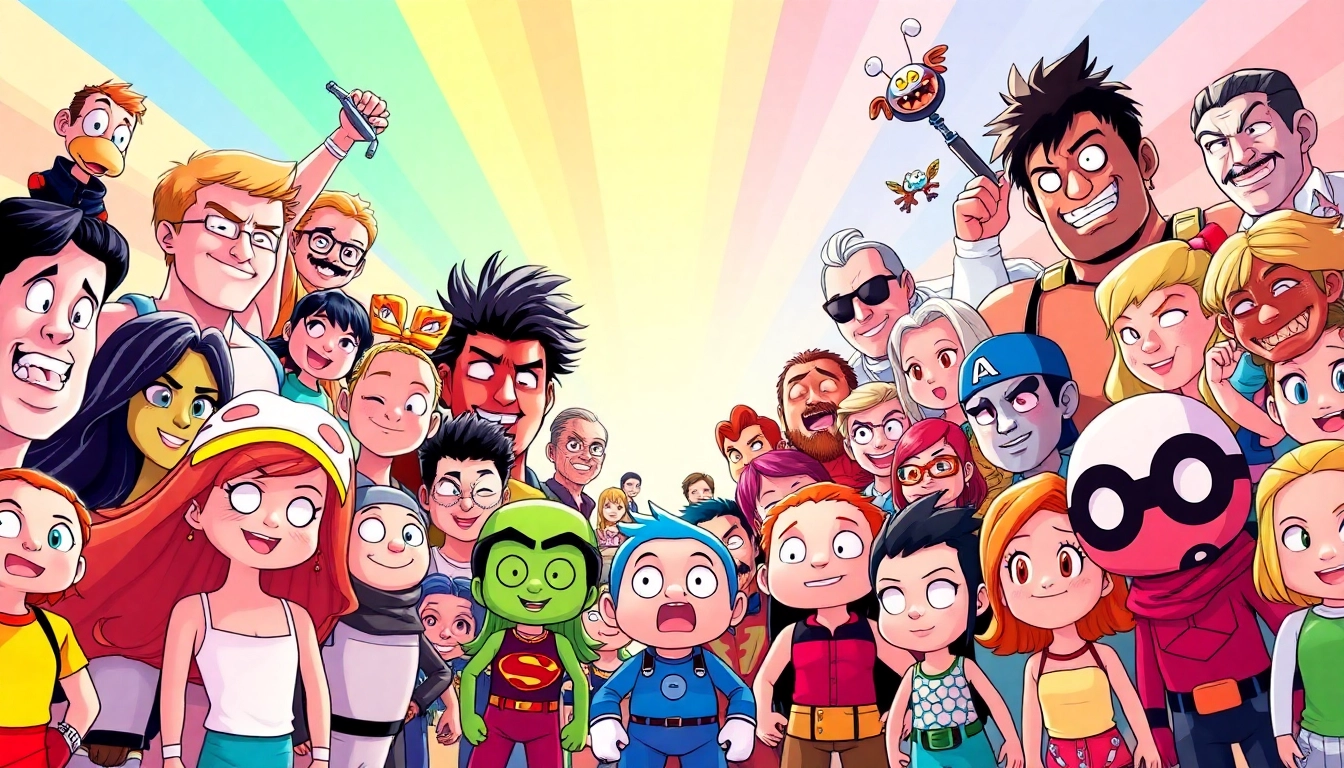Introduction to Characters
Characters serve as the backbone of storytelling across various media, embodying the essence of narratives in novels, films, television shows, and video games. They drive the plot and connect with the audience on a personal level, making them integral to the success of any story. In this exploration of Characters, we will define their role, investigate their evolution through time, and examine their significance in engaging audiences across different formats.
Definition of Characters in Media
In the realm of fiction, a character is defined as a being within a narrative, whether human, animal, or even an inanimate object. They can represent a wide range of traits, emotions, and motivations, shaping the audience’s understanding of the story. This malleability allows characters to fulfill various roles, serving as protagonists, antagonists, or supporting figures, and ultimately contributing to the depth of the narrative.
Evolution of Characters Over Time
The concept of characters has undergone significant transformation throughout history. In early literature, characters were often archetypes or flat figures embodying singular traits—think of the heroes and villains in ancient myths. As storytelling evolved, character complexity increased, giving rise to multi-dimensional figures that embody conflicting emotions and nuanced motivations. Modern narratives often delve into psychological realism, where characters grapple with internal conflicts just as much as external ones, reflecting the complexity of human experience.
Importance of Characters in Storytelling
Characters are essential for creating emotional connections with audiences. Their experiences, struggles, and growth echo the viewers’ or readers’ realities, fostering empathy and investment in their journeys. The better crafted a character is, the more likely the audience will engage with the story, leading to memorable experiences that can resonate long after the narrative concludes. This engagement is vital across media, whether it be film, literature, or interactive storytelling.
Types of Characters
Protagonists and Antagonists Defined
At the heart of many stories lies the protagonist, the character the audience primarily follows and roots for. Conversely, the antagonist opposes the protagonist and often embodies the central conflict of the narrative. These characters can be individuals or larger societal forces, but their interactions create the tension that propels the plot forward. Understanding these roles allows writers to craft compelling narratives that maintain audience interest.
Supporting Characters and Their Roles
Supporting characters enrich the narrative, providing depth and context to the main storyline. They can serve various functions: mentors, comic relief, or foils to the protagonist. Each type of supporting character has a unique contribution, whether by enhancing the protagonist’s journey or driving home key themes. The interplay among characters creates a tapestry of relationships that gives the story its vibrancy.
Archetypes and Character Development
Archetypes are universal symbols or themes that recur across stories and cultures. They offer a shorthand for character representation, making them instantly recognizable. For instance, the “mentor” archetype often portrays a wise figure guiding the protagonist. While archetypes can provide a solid foundation for character creation, successful narratives often blend and subvert these roles to create compelling, memorable characters that surprise and engage audiences.
Popular Characters in Film and Television
Iconic Movie Characters
Film has produced a plethora of characters that have become cultural icons, such as Indiana Jones, Luke Skywalker, and Harry Potter. These characters not only drive their respective films’ narratives but also represent archetypes and themes that resonate with audiences globally. Their journeys often epitomize universal struggles—such as the quest for identity, the fight against evil, or the importance of friendship—making them memorable long after the credits roll.
Memorable Television Characters
Television’s episodic format allows for rich character development over time, giving viewers a chance to witness characters grow and evolve. From the nuanced character arcs in shows like “Breaking Bad” to the ensemble dynamics in “Friends,” television characters can become integral parts of viewers’ lives, shaping their perceptions and emotions. Characters such as Walter White or Rachel Green have permanently shaped the landscape of modern storytelling.
Analysis of Character Impact on Audience
Research shows that well-crafted characters significantly affect audience engagement and emotional response. Characters who exhibit traits of relatability and authenticity tend to forge stronger connections with viewers, leading to greater investment in the storyline. Moreover, characters that undergo transformational arcs resonate particularly well, as they reflect the audience’s journey of growth and self-discovery. Understanding how characters impact viewer engagement is crucial for storytellers aiming to create captivating narratives.
Characters in Gaming
The Role of Characters in Video Game Narratives
In video games, characters are fundamental to immersive storytelling. They drive plotlines, engage players emotionally, and create a connection between the player and the game world. Characters can also be pivotal for gameplay mechanics; choices made by players often hinge on character interactions, thereby enhancing the experience. The dynamic nature of gaming allows for unique character development possibilities, making them indispensable in creating compelling narratives.
Iconic Game Characters and Their Legacy
Characters like Mario, Link, and Lara Croft have transcended their games to become cultural icons, representing unique gameplay experiences and narratives. Fans often discuss their character traits, evolution, and impact on the gaming landscape. These characters’ legacies continue to influence new generations of gamers and game developers, ensuring their place in the annals of entertainment history.
Designing Characters for Engagement
Creating characters that resonate with players involves a deep understanding of audience preferences and narrative possibilities. Developers must consider aspects such as personality traits, aesthetics, and backstory while ensuring that the character feels relevant to the game’s context. Engaging characters often showcase a degree of complexity—players should find them relatable or aspirational, leading to a deeper emotional investment in the game.
Creating Compelling Characters
Techniques for Character Development
Effective character development begins with thorough research and planning. Writers can employ methods such as creating detailed character profiles, defining backstories, and exploring character motivations and arcs. Creating vivid and engaging dialogue also helps in fleshing out a character’s personality. Additionally, using feedback from beta readers or players can provide insights into how well characters resonate, allowing for iterative improvements.
Common Challenges in Character Creation
Character creation is not without its challenges. Writers may struggle with avoiding clichés, ensuring character diversity, and maintaining character consistency throughout a narrative. To overcome these hurdles, creators should strive for authenticity in their characters, relatability without predictability, and actively seek diverse perspectives in writing processes. Iteration and feedback can also be critical in refining character arcs and traits.
Case Studies of Successful Characters
Analyzing successful characters can yield valuable insights for aspiring writers. For instance, characters like Tony Stark from the Marvel Cinematic Universe, who blend flaws with redeeming qualities, serve as great examples of how to create layered, relatable figures. By examining popular characters’ motivations, conflicts, and growth, writers can glean lessons and strategies for developing their unique creations.



